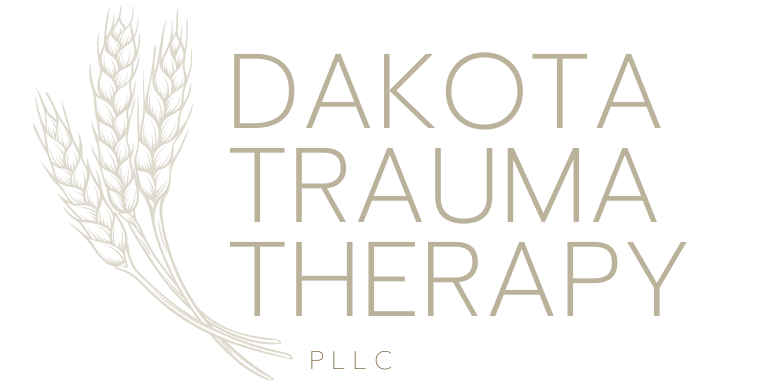Adjustment disorder is recognized as a group of depressive symptoms that essentially occur after an unexpected distressful event.
For over five decades, the term adjustment disorder is being used by clinicians for individuals struggling with stress management after a particular occasion.
Events leading to adjustment disorder may include, death of a loved one, breakup, loss of a job, or any situation pertaining to the feeling of loss.
According to The Diagnostic and Statistical Manual of Mental Health- 5 (DSM-5) (1), when a person is put through an unexpected stressful condition, he is more likely to suffer from adjustment disorder.
A person diagnosed with adjustment disorder displays agitation, tearfulness, persistent hopelessness, and no interest in social activities within three months of a specific event. Although unpleasant circumstances bring about myriads of stressful episodes in everyone’s life, not everyone is diagnosed with adjustment disorder.
The significant difference between normal grief and adjustment disorder is that adjustment disorder is a short-lived abnormal stress response, whereas grief displays normal distress. Untreated adjustment disorder can quickly escalate to life-threatening situations.
However, promptly referring such patients to psychotherapists or psychiatrists helps reduce the symptoms and manage the disorder. (2)
Types of Adjustment Disorder
The DSM-5 has classified Adjustment Disorder into six different types based on the manifestation of symptoms.
Adjustment Disorder with Depressed Mood
It usually describes a person who shows the signs of depression followed by a stressful event. Its symptoms may include persistent crying, feeling of loneliness, isolation, and unsettling discomfort.
A person might experience detachment from the outside world and irritation from the activities he used to enjoy in the past.
Adjustment Disorder with Anxiety
Individuals diagnosed with adjustment disorder experiencing nervousness, irritability, fret, and overwhelming emotions fall into this category. Such patients struggle to focus on one task at a time and memorizing essential details.
Children experiencing adjustment disorder with anxiety fear getting apart from their parents or guardians.
Adjustment Disorder with Mixed Anxiety and Depressed Mood
People diagnosed with this type of Adjustment Disorder suffer from persistent sadness and overwhelming emotions while distancing themselves from the outer world. Making it even complicated to seek treatment.
Adjustment Disorder with Disturbance of Conduct
The most common type of adjustment disorder in adolescents and teens is the one with disturbance of conduct. It involves behavioral and moral misconduct, including reckless driving, damaging property, picking fights, and even criminal offenses. They also might ditch school to participate in such activities.
Adjustment Disorder with Mixed Disturbance of Emotions and Conduct
Individuals are diagnosed with this type of adjustment disorder when behavioral misconduct is accompanied by emotional disturbance, i.e., feeling of despair and anxiety. Again, it’s more common in teens.
Adjustment Disorder Unspecified
This diagnosis is made for a person presenting with adjustment disorder due to other environmental stressors to which he is maladaptive. It may involve physical stressors such as those triggered by family, friends, school, or the workplace. (3)(4)
Causes of Adjustment Disorder

As explained in detail above, adjustment disorder develops as a result of an individual’s reduced ability to cope with general stressors; here are some common adjustment disorder triggering stressors. (5)
One-time stressors include:
- A broken relationship, i.e., divorce or separation from a romantic partner
- Rejection from potential employers
- Loss of property
- Loss of job
- Death of a loved one
Recurring stressors include:
- Regular unpleasant arguments at the workplace
- Continuous loss in business
- Dissatisfying sexual relationships
Continuing stressors include:
- Prolong illness such as cancer
- Stressful environment
Multiple stressors can contribute to AD as well, such as;
- A person who is going through a toxic marriage and continuous loss in business
- Loss of a loved one and getting fired from a job at the same time
Other stressors may include:
- Getting retired
- Going away from parents’ home
- Coming back to parents’ home after a long time.
- Getting married
- Getting into a relationship after a long period.
- Having to experience a natural disaster like tsunami, earthquake, etc.
- Becoming a parent for the first time.
- Continuously failing at career.
- Going to school (prevalent in children and adolescents)
Symptoms of Adjustment Disorder
Symptoms may vary from person to person depending upon the type of adjustment disorder they are experiencing. The onset of symptoms is usually within three months of a painful event and may last till six months from the onset.
However, persistent chronic adjustment disorder may continue for more than six months. Following are some general symptoms related to adjustment disorder:
- Pounding of heart
- Forceful and irregular heartbeats
- Indigestion, causing stomach problems such as constipation or bloating
- Isolation from the outside world (general with depression)
- Considering one’s self worthless and unlucky
- A deep feeling of despair
- Inability to hope for a better future.
- Uncontrolled crying
- Extreme anxiety and nervousness.
- Unending worry
- Disturbed eating patterns (overeating or loss of appetite)
- Headache and migraine.
- Skipping school or office
- Feeling of fatigue and tiredness.
- Lack of motivation.
- Inability to concentrate on everyday tasks.
- Risk of substance abuse
- Drinking heavily to cope with the loss.
- Disturbed sleep patterns (oversleeping or insomnia)
- Destructive approach for solving conflicts, leading to worse consequences.

However, in worst-case scenarios, when immediate medical help is not sought, the symptoms may worsen. A person experiencing the above-mentioned emotional symptoms is at a high risk of developing potential suicidal tendencies and can harm himself if not treated timely.
Therefore, it is vital to take these symptoms seriously and consult a psychotherapist as soon as possible to avoid any potential damage. According to a study, “Individuals diagnosed with adjustment disorder have 12 times higher rate of suicide than those without AD.” (6)
Diagnosis of Adjustment Disorder
Diagnosis of adjustment disorder doesn’t require any specific laboratory tests. However, your doctor may ask for some tests to rule out the possibility of any physical trauma such as head injury or any other mental illness.
After assessing your physical health, a general practitioner will refer you to a psychologist or psychotherapist to evaluate your mental health.
A professional psychotherapist assesses your mental wellness by taking a thorough history of your symptoms and their onset. The diagnosis is essentially made on the basis of the diagnostic criteria provided by the DSM-5, which is as follows;
- Manifestation of symptoms (emotional or behavioral) within the period of three months after the occurrence of a particular stressor.
- Experiencing the intensity of stress which is far more than expected in typical situations.
- Substantial adverse effects on personal and professional life.
- Symptoms should not be of normal bereavement.
- Symptoms should not last for more than six months.
- No symptom is resulting from any other underlying mental health condition. (7)(8)
Treatment of Adjustment Disorder
Once you’re diagnosed with adjustment disorder, the next step is appropriate treatment for it.
Like other mental health disorders, patients are given both psychological and pharmacological therapies to obtain a maximum positive outcome.
Nonetheless, in the case of adjustment disorder, patients are benefited more after receiving psychotherapy from well-versed psychotherapists. (9)
Medicinal Treatment
Medicines are given to control the symptoms of sleep disturbance, anxiety, depression, and stress. They may include anxiolytics, antidepressants, and relaxants.
The most common antidepressants are SSRIs and SNRIs to reduce the symptoms of depression. For anxiety, the most effective drugs are benzodiazepines such as lorazepam and alprazolam.
If you’re prescribed these medicines, don’t stop using them all of a sudden, even if the symptoms of adjustment disorder are subsided. Tell your therapist about your progress, and he will tapper down the doses until eventually taking you off them.
Psychotherapy
Since adjustment disorders are short-term disorders that require prompt intervention, psychotherapy is probably the most effective treatment for them.
With effective talk therapy, the patient may notice rapid improvement in his sorrowful condition. Psychotherapeutic interventions may involve group therapies, family therapy, support groups, EMDR therapy or short-term interpersonal therapy.
Cognitive-behavioral therapy is generally implemented to rule out the negative thought pattern developed after a saddening occasion.
Your therapist will focus on changing those negative emotions with positive ones to help you eliminate negative memories associated with an event.
A psychotherapist may help you,
- Express your emotions without any fear of being judged or schooled
- Understand the root cause of your feelings.
- Alleviate the feeling of despair by intervening in your thought process with effective psychotherapeutic techniques.
- Replace your negative thoughts with positive ones, e.g., I am so useless that I couldn’t hold that job ( negative emotion), replaced with – I can do a better job (positive emotion)
- Learn powerful coping skills for the future.
With regular therapy sessions in shorter intervals, patients are recovered rapidly.

Adjustment Disorder Prevention
You can’t prevent yourself from something which is unexpected. Adjustment disorders occur unexpectedly in the least anticipated scenarios; therefore, no preventive measures can save you from them.
Yet, a solid support system plays a vital role in keeping you from developing adjustment disorder after an inevitable loss or painful event.
Timely treatment is another factor in impeding the disorder in its early developing stages. Immediate identification and therapeutic intervention may save the patient from worse consequences.
How to Deal With Adjustment Disorder
Dealing with adjustment disorder can be challenging if you’ve no one to support you through the path.
Still, if you identify adjustment disorder symptoms within three months of an upsetting event, you must seek professional assistance and modify your lifestyle to cope with it.
Following are a few tips to help you deal with adjustment disorder:
Find Peace Within–
Battling with an uncalled emotion is not so easy to deal with. Yet, you can take some time out for yourself and engage in fun activities.
Get enrolled in some art class and heal yourself with art and craft or whatever fancies you. It will help reduce your stress levels and make you feel lighter.
Involve in Physical Activities –
Exercise releases endorphins in the body. Endorphins are happy hormones that trigger the happy emotions in your body. Recent studies have shown the profound impact of exercise on anxiety and stress levels in adults. (10)
Try to Sleep Early –
Sleep and stress often go hand-in-hand. The less you sleep, the more stressed you are, and the more stressed you are, the more disturbed your sleep will be. Stop this cycle once, and you will see a notable improvement in your symptoms of adjustment disorder.
Try adding melatonin supplements to your diet right before you go to bed for a peaceful sleep. Spraying some diluted lavender essential oil on your pillow before you sleep might also help. (11)
Eat Healthy –
It might be a bit harder for a person suffering from adjustment disorder to take care of his eating habits. However, adding a few easily consumable nutrient-rich foods may help you stay calmer and happier.
For instance, a diet with low magnesium content, including leafy green vegetables, nuts, whole grains, and those rich with zinc such as egg yolks, beef, and oysters, help calm anxiety. (12)
Mood Boosters –
Listen to some music as per your taste or meditate in order to keep yourself relaxed for as long as you possibly can.
Keep in mind that sad music generates much more distress, and it should not be listened to.
Hazardous Coping Habits Should Immediately be Dropped –
If you’re consuming heavy doses of alcohol and considering it as your coping strategy, you must stop doing it NOW.
Studies show that alcohol and other abusive drugs put an already depressed individual through more challenging mental illnesses (i.e., alcohol-induced psychotic disorders)(13).
Socialize More Often –
Socializing is proved to be improving cognition and thus helping your brain function better.
Organize meet-ups with friends and family. Spend time with your loved ones more often. Play with kids and pets. Socializing releases oxytocin hormones which further elevates mood and boosts confidence. (14)

With these few lifestyle alterations, you can overcome your adjustment disorder in no time. Remember, your mental health is essential and requires individual effort too.
If Someone You Know is Diagnosed With Adjustment Disorder
If you know someone who has lately been diagnosed with adjustment disorder and you want to help them, make sure you’re doing the following;
- Getting them out of the stressful atmosphere and situations (if you possibly can).
- Offering them a venting shoulder, where they can express their despair without second-guessing their emotions.
- Not making them feel guilty about their overwhelming distress.
- Helping them socialize and paving their way for it by arranging family gatherings with people they would like to spend their time with.
- Not forcing your opinions on them.
- Participating in therapy sessions with them.
- Encouraging healthy lifestyle modifications like exercising, aerobics, meditation, improved sleep patterns, healthy eating habits, etc.
- Making them aware of the potential adverse effects of any negative coping strategy they might have adopted.
- Being patient.
- Genuinely care for them.

A person with adjustment disorder is likely to regain his normal mental state quicker than those with other mental illnesses. A little support and social help can contribute a lot to the mental well-being of such individuals.
Difference Between Adjustment Disorder and Major Depression
Both adjustment disorder and major depressive disorder are associated with depressive symptoms, which may sometimes create confusion. The main difference between both these disorders is the intensity of the depressive episode.
In major depressive disorder, the depressive episodes are more intense than adjustment disorder which shows a milder depressive episode. (15)
Difference Between Adjustment Disorder and Generalized Anxiety Disorder
Anxiety symptoms in adjustment disorder are commonly confused with those in generalized anxiety disorder. However, in generalized anxiety disorder, the symptoms of anxiety and nervousness are more persistent than in adjustment disorder.
Individuals with adjustment disorder quickly recover with therapeutic interventions, whereas GAD patients require more rigorous and prolonged therapeutic interventions. (16)
Difference Between Adjustment Disorder and PTSD
While both PTSD (post-traumatic stress disorder) and AD (adjustment disorder) are stress response disorders, they are definitely not the same (17).
The chief difference between both is the cause; adjustment disorder arises as an inability to handle typical stressors such as change of environment or divorce/separation. On the contrary, PTSD stems from a rather traumatic event, such as sexual assault or post-war trauma.
Another difference between AD and PTSD is that AD symptoms are rarely seen after the first six months of its onset, whereas the symptoms of PTSD last longer.
What Happens if the Adjustment Disorder Persists?
If unidentified, adjustment disorder may transform into chronic persistent adjustment disorder, life-long depression, anxiety, or any other mental illness.
Final Thoughts
Adjustment disorder is a kind of behavioral and mood disorder that occurs when someone goes through an unexpected phase in his life and cannot cope with the stress response.
Unlike major depressive and anxiety disorders, adjustment disorder is short-lived and subsides within six months of its onset.
However, not seeking professional help may augment the risk of developing severe psychotic disorders.
If you’re someone going through a tough time dealing with a loss or a sudden environmental transition, don’t sit back and suffer in darkness.
Adjustment Disorder is very much treatable; in fact, you will see improvement in your behavior and mood in a matter of a few weeks with appropriate treatment.

